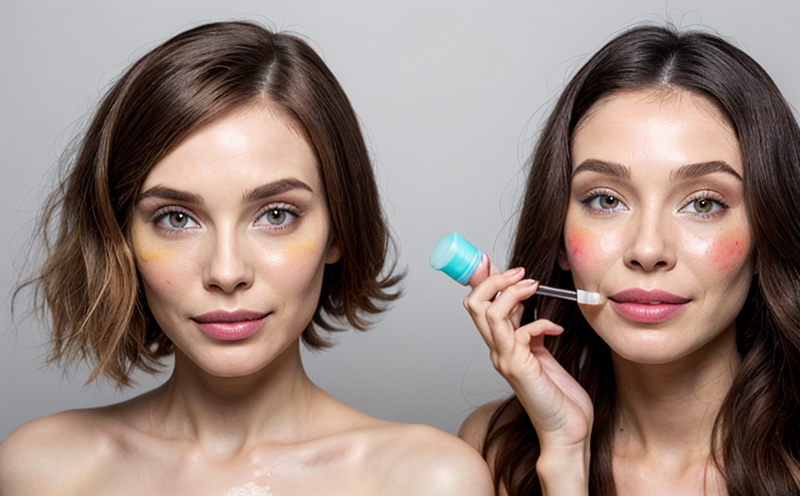Preservative Efficacy Testing in Preservative-Free Cosmetics
The demand for natural and organic cosmetics has been on a steady rise, driven by consumer preference towards products that are free from synthetic preservatives. However, this presents unique challenges for manufacturers who must ensure product stability without the use of traditional preservatives like parabens or benzoates. This is where preservative efficacy testing in preservative-free cosmetics becomes critical.
This type of testing ensures that even without conventional preservatives, a cosmetic formulation remains stable and free from microbial contamination over its shelf life. The challenge lies in the fact that these products are more susceptible to microbial growth due to their nature, which typically involves water-based ingredients or natural extracts that can serve as nutrients for microorganisms.
The testing process is meticulous, involving a series of steps designed to replicate real-world conditions and ensure robust results. Specimens undergo a range of tests including microbiological challenges, incubation periods, and monitoring using advanced laboratory techniques such as high-performance liquid chromatography (HPLC) for detecting microbial growth indicators.
The significance of this test cannot be overstated. It ensures that consumers are protected from potential health risks associated with microbial contamination while also upholding the integrity of natural product claims made by manufacturers. By leveraging advanced testing methodologies, laboratories can provide reliable data that helps brands maintain compliance and trust in their market offerings.
- Replication of real-world conditions to ensure accurate results
- Advanced microbiological challenges for comprehensive testing
- Inclusion of incubation periods to observe microbial growth over time
- Use of HPLC technology for precise detection and quantification
The importance of this service extends beyond mere compliance; it plays a pivotal role in safeguarding public health. By rigorously testing preservative-free products, manufacturers can demonstrate their commitment to quality and safety, thereby building consumer confidence.
Moreover, the results from these tests are crucial for R&D teams as they provide insights into product stability under various conditions. This information is invaluable for refining formulations and extending shelf life without compromising on natural or organic claims.
Why Choose This Test
The decision to conduct preservative efficacy testing is driven by several compelling reasons that are crucial for the success of natural and organic cosmetic products:
- Enhanced Consumer Confidence: By ensuring product stability, this test boosts consumer trust in the safety and quality of natural cosmetics.
- Regulatory Compliance: This service helps manufacturers meet regulatory standards without compromising on their commitment to using only natural ingredients.
- Data-Driven Formulation Optimization: The results provide valuable insights that can be used to enhance product stability and extend shelf life effectively.
The rigorous nature of this testing ensures that the final products are not just compliant but also superior in terms of quality. This is especially important for brands aiming to stand out in a crowded market, where trust and reliability are key differentiators.
Quality and Reliability Assurance
The importance of preservative efficacy testing cannot be overstated, particularly when it comes to ensuring the quality and reliability of natural and organic cosmetic products. The process is designed to replicate real-world conditions, providing a comprehensive assessment of product stability over time.
One of the key challenges in this area is understanding how different environmental factors—such as temperature, humidity, and light exposure—affect the formulation's microbial resistance. Laboratories use sophisticated techniques like high-performance liquid chromatography (HPLC) to detect even trace levels of microbial contamination.
The reliability of these tests is further enhanced by strict adherence to international standards such as ISO 22716:2013, which provides guidelines for the production and marketing of cosmetic products. By following these standards, laboratories can ensure consistent and accurate results that are both reproducible and reliable.
For R&D teams, the data obtained from preservative efficacy testing is invaluable. It allows them to make informed decisions about ingredient selection and formulation adjustments, ultimately leading to improved product performance. This aligns perfectly with the broader goal of creating high-quality natural cosmetics that meet both consumer expectations and regulatory requirements.
Customer Impact and Satisfaction
The impact of preservative efficacy testing extends far beyond the laboratory; it directly influences customer satisfaction and trust in natural cosmetic brands. By ensuring product stability, manufacturers can offer consumers products they can rely on without fear of microbial contamination or spoilage.
For customers who prioritize health and safety, this service provides peace of mind. Knowing that their favorite natural cosmetics have undergone rigorous testing reassures them about the brand's commitment to quality. This trust translates into higher customer satisfaction and loyalty, which is crucial for sustaining long-term relationships with consumers.
In addition to enhancing consumer confidence, successful preservative efficacy testing can also lead to positive press coverage and increased market visibility. Brands that demonstrate their dedication to product safety are more likely to gain favorable attention from media outlets and influencers, thereby expanding their reach.
Moreover, satisfied customers often become brand advocates, sharing their positive experiences with others. This word-of-mouth marketing is invaluable in the competitive world of natural cosmetics, where reputation plays a significant role in driving sales.





